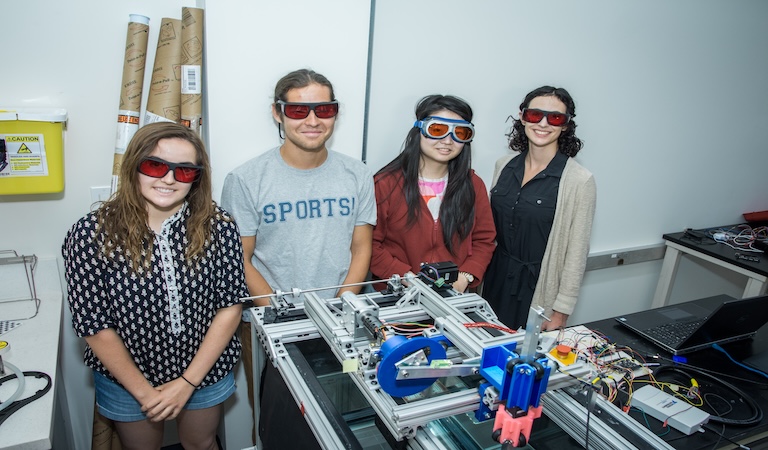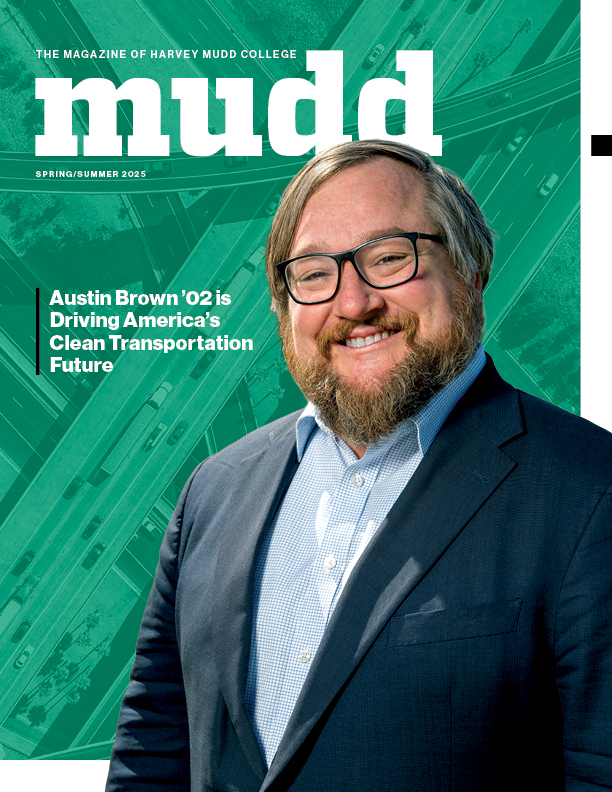NSF Supports Mudders in the Splash Zone of Bioinspired Fluid Mechanics
May 30, 2024
Harvey Mudd College engineering professor Leah Mendelson has been awarded a grant from the National Science Foundation (NSF) for her project “ERI: Free surface and flexibility effects in partially-submerged bio-inspired propulsion.” The project aims to help researchers better understand the effects water’s surface has on vehicles and robots that operate in underwater ecosystems.
“The water’s surface is a really interesting environment to operate in because there’s a lot of fluid behavior that doesn’t exist in other environments,” Mendelson says.
Her work in the field of bioinspired fluid mechanics focuses on using insights learned from swimming organisms to develop underwater vehicles and actuators that can maneuver efficiently and are less disruptive to their surrounding aquatic environments.
Mendelson notes that in nature, there are a lot of interesting animal behaviors that could inspire underwater vehicle designs, but it is essential to have a fundamental understanding of the physics at play.
“You’ve got a lot of splashing, wave formation and bubbles and air being pulled into the water if you operate at the surface,” Mendelson says. “All these factors are going to affect the propulsive performance and how well any sort of bioinspired actuator can do.”
The initial work of creating a simplified mechanical model of this bioinspired propulsion has already been completed by Mendelson and her team of Harvey Mudd students.
“The experiment is entirely student built,” Mendelson says. “They’ve built a water tank and an apparatus that sits on top of the tank, handling all the motor controls. They set up all the cameras and lighting and developed the capabilities needed to actually do the science to answer our questions.”
Rafael Burger ’24 and Naomi Horiguchi ’26 played an integral role in making the experiment easier to run by redesigning one of the degrees of freedom for the tank mechanism, making it more adjustable and reliable.
“They also did a lot of work characterizing the forces that our mechanism exerts,” Mendelson says. “Now we can subtract those forces and just be left with the fluid forces at the end of the experiment.”
The experiment uses a flapping, flexible plate to simulate a fish on the surface while tiny tracer particles, which Mendelson describes as “research-grade glitter,” float in the tank’s water. She and her team measure the forces that the plate produces in varying depths, stiffness and speed and flow patterns produced by using a laser to light up the tracer particles in the water.
“The laser gives us really bright light and minimal motion blur,” Mendelson says. “By filming the motion of those particles, we can see where there are vortices in the flow and where the momentum is going. It’s really hands-on work, and students are in the splash zone.”
The NSF grant will enable Mendelson to bring a bigger, interdisciplinary team on to this project as well as support summer research students to present their research results at conferences.
The work “requires a lot of hands-on engineering from students and provides them with research experience and an opportunity to go out into the broader scientific community to see what’s out there,” Mendelson says.
